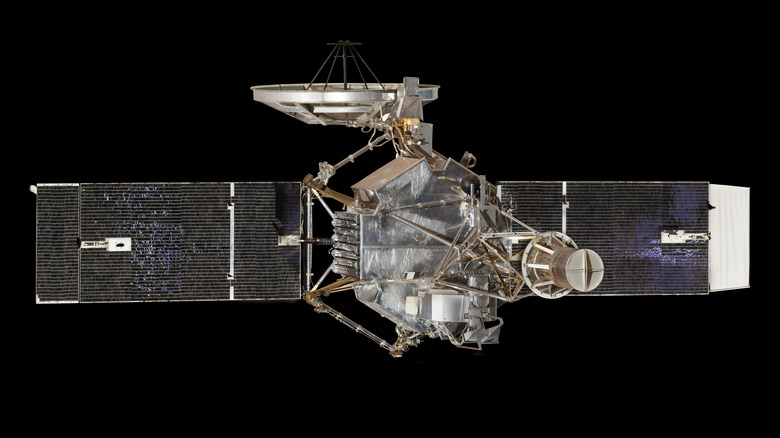This Simple Programing Error Cost NASA $18 Million
NASA recruits some of the brightest minds in the United States and the world. These individuals are tasked with some of the most complex problems that humans have ever faced. Launching people and material into space is a huge undertaking, and it requires immense brainpower and computational efficiency.
Because of the complexity here, there have been numerous occasions during which a small miscalculation in the building or planning of a rocket launch has scuttled the entire project or resulted in catastrophic failure during or directly after launch. The Challenger explosion, for instance occurred because O-rings on the fuel tank we're exposed to overnight temperatures that cracked them (via History).
The math involved in successfully launching and subsequently retrieving a crew of astronauts is often centered on launch trajectory, but engineering, precise timing, and weight and mechanical machinations all play essential roles in the line drawn between triumph and tragedy. Because of the hazardous nature of space travel, many missions are sent out without astronauts. Fortunately, a partiicular programming error that resulted in a huge loss of financial resources was not one that added human suffering to its list of failures (via Britannica).
A missing value led ultimately to mission failure
In the summer of 1962, NASA launched the Mariner 1 Mission, an unmanned mission where the agency would fly by Venus and probe for data (via Wired). This craft was propelled into the air from a launchpad at Cape Canaveral in Florida. Real Engineering notes that these Mariner rockets were built with two overlapping systems for guidance. The rate system and the track system would operate simultaneously to provide real-time telemetry data and govern the rocket's continued ascent out of Earth's atmosphere and into space. But the rate system failed early in the flight, and a coding error in the governing track system program created an erratic flight path that led NASA engineers to abort the mission (via Wired).
Engineers at that time typically wrote out their coding work on physical paper, according to Real Engineering. These codes were then translated through a complex system into computer-readable cards. The computer then executed the program. The laborious nature of this manual system made the capacity mistakes high, and this is exactly what happened with the Mariner 1 launch. The track system should have executed on an averaging of velocity, but a missing symbol, a hyphen, according to NASA, doomed the rocket to shift in its programmed positioning and ultimately led to a total mission loss.
NASA reported that the failed mission cost roughly $18 million at the time (via Fast Company), which equates to a total bill of around $150 million in today's dollars!
The mission would have been the first flyby of Venus, a much-studied neighbor
The Mariner 1 mission was intended to fly past Earth's nearest neighbor, Venus in an effort to study the planet's surface and environment. After the failure, a second Mariner mission did successfully complete this task and now orbits the Sun, even after losing contact with NASA mission control, according to The National Air and Space Museum. The second Mariner satellite uncovered the hidden nature of solar winds and radically transformed our understanding of the universe, our place in the solar system, and this star that sits at its center (via NASA).
These Mariner missions prove both the importance of precision and the value of interior solar system exploration. But the Mariner missions weren't the only ones to explore Venus and the areas that lie farther in toward the Sun from our home. In the 1970s and 1980s, the Soviet Union sent a number of probes to the surface of our closest neighbor. This "Venera" program transmitted images of the planet's surface back to Earth, and the result was a stunning look into what lies beyond our own world.
More recently, NASA has revived its interest in exploring Venus as a result of new discoveries on the planet's surface. The New York Times reports that phosphine gas has been found there, potentially signaling the existence of life on the planet after all. Only time will tell what we find on Venus, but one thing is for sure: Getting the math right is always a critical step in the right direction.


